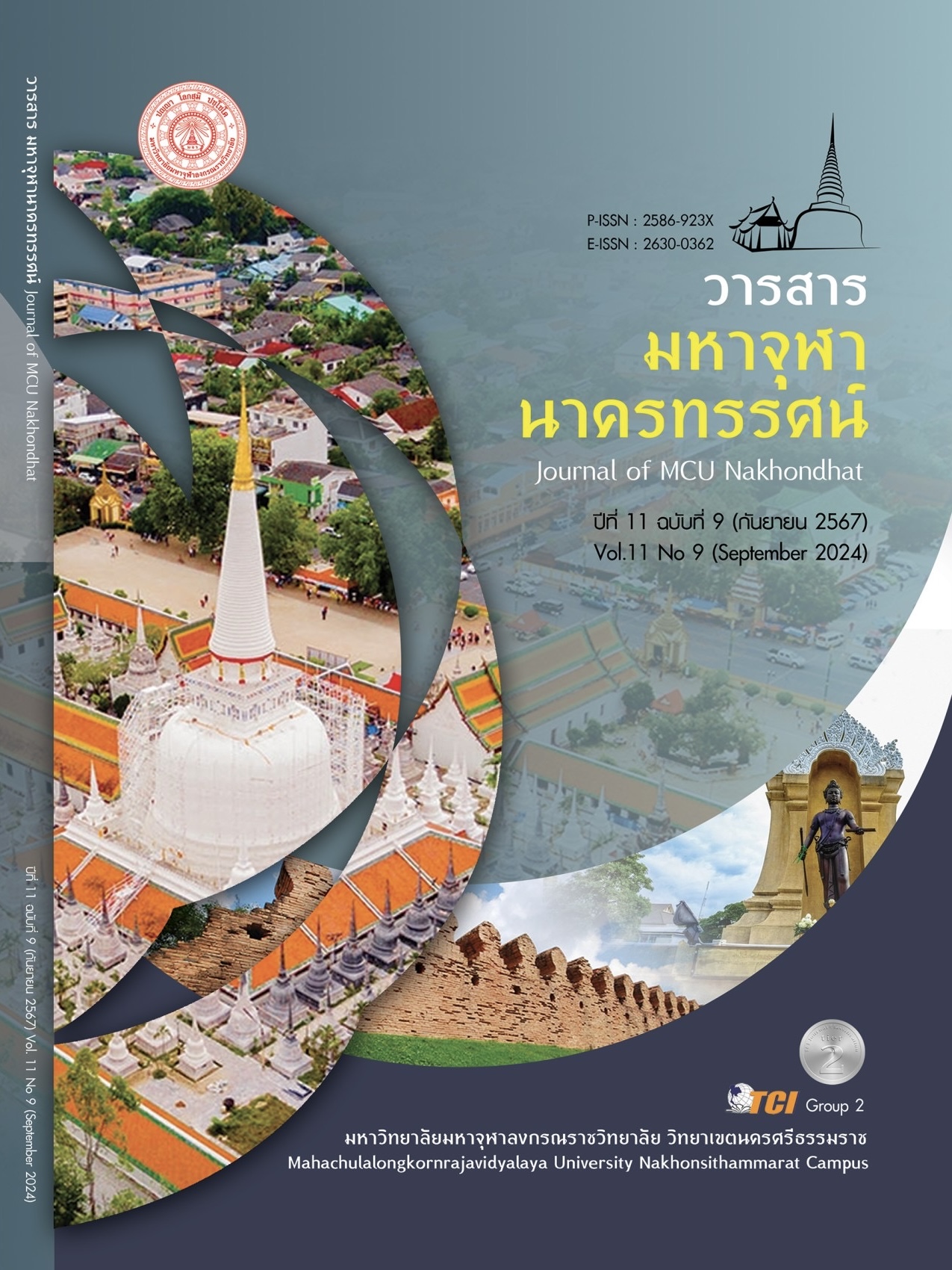A STUDY OF THAI RESTAURANT NAMING TRENDS: A CASE STUDY OF THE NAME OF A THAI RESTAURANT IN BEIJING IN CHINA
Main Article Content
Abstract
The research aimed to study the trends in naming Thai restaurants in Beijing, China, by examining documents related to Thai food culture. The population consisted of 126 Thai restaurants in Beijing, with a sample of 50 selected through purposive sampling. Quantitative data were analyzed using descriptive statistics, with percentages calculated based on the frequency of Thai restaurant names translated into Chinese, including those with both Chinese and English names. Qualitative data were analyzed using content analysis to understand the trends in translating Thai restaurant names into Chinese and their impact on customer perception. The study found that the naming of Thai restaurants in Beijing tends to reflect the characteristics of Thai food and culture. Three key components emerged: 1) 80% of the sample (40 out of 50 restaurants) used three-syllable names in Chinese, a popular choice due to its familiarity in Chinese social culture; 2) 70% of the sample (35 out of 50 restaurants) chose names linked to Thai culture and geography, highlighting a preference for names that evoke Thai cultural elements; 3) 90% of the sample (45 out of 50 restaurants) used the Chinese character "泰" (Thai) in their names, emphasizing its importance in conveying "Thainess" and ensuring clear customer understanding. However, when restaurant names are overly complex, additional explanations should be provided to ensure customers fully understand the meaning.
Article Details

This work is licensed under a Creative Commons Attribution-NonCommercial-NoDerivatives 4.0 International License.
References
กรมส่งเสริมวัฒนธรรม. (2563). นโยบายการส่งเสริมวัฒนธรรมไทยในต่างประเทศ. กรุงเทพมหานคร: กระทรวงวัฒนธรรม.
นริศรา เกตวัลห์ และวิไล ธรรมวาจา. (2553). ภาษาไทยกับการสื่อสาร. (พิมพ์ครั้งที่ 5). สมุทรสาคร: ต้นไม้น้ำ.
เนตรน้ำทิพย์ บุดดาวงศ์ และศรัณธร สุระหาร. (2564). การศึกษากลวิธีการแปลชื่ออาหารไทยเป็นภาษาจีน: กรณีศึกษาร้านอาหารไทยในนครเฉิงตู สาธารณรัฐประชาชนจีน. ใน วิทยานิพนธ์มหาบัณฑิต สาขาวิชาภาษาจีน. มหาวิทยาลัยราชภัฏอุบลราชธานี.
วรสิทธิ์ สุธีระพจน์. (2556). การสร้างแบรนด์และการตลาดวัฒนธรรม. กรุงเทพมหานคร: สำนักพิมพ์แห่งจุฬาลงกรณ์มหาวิทยาลัย.
สมฤทธี บัวระมวล. (2548). ชื่องาม นามดีตามวันเกิด. กรุงเทพมหานคร: คุ้มคำ.
สำนักงานส่งเสริมการค้าในต่างประเทศ ณ นครคุนหมิง. (2566). จับตามองร้านอาหารไทยในตลาดแดนมังกร. เรียกใช้เมื่อ 20 มีนาคม 2567 จาก https://mp.weixin.qq.com/s/qzASfVxaEvZohw5HNQI6lg
สุวิไล เปรมศรีรัตน์ และคณะ. (2527). ชื่อหมู่บ้านของอำเภอเมืองสุรินทร์. เรียกใช้เมื่อ 10 มกราคม 2567 จาก https://archive.li.mahidol.ac.th/handle/0280026809/2271
Dianping. (2022). Urban lifestyle in China Reflects the success of the unique Thai food culture that has been continually accepted Create economic value in line with driving the Thai kitchen policy towards a world kitchen. Retrieved March 20, 2024, from https://www.dianping.com/
Hofstede, G. (1980). Culture's Consequences: International Differences in Work-Related Values. Beverly Hills California: Sage Publications.
Thai select. (2024). Office of Agricultural and Industrial Trade Promotion Department of International Trade Promotion, Ministry of Commerce. Retrieved March 20, 2024, from https://www.thaiselect.com/th
Wang, J. & Chatrawangkhiri, L. (2565). A Comparative Study of Restaurant Naming in Muang Chiang Mai and Fuzhou China. Journal of Buddhist Anthropology, 7(1), 225-239.
Yifei, M. (2021). Appearance and Locality: Thanks to the Thai Restaurant Police in Kunming. In the long-term degree thesis in Business Administration and Tourism Management. Yunnan University.


